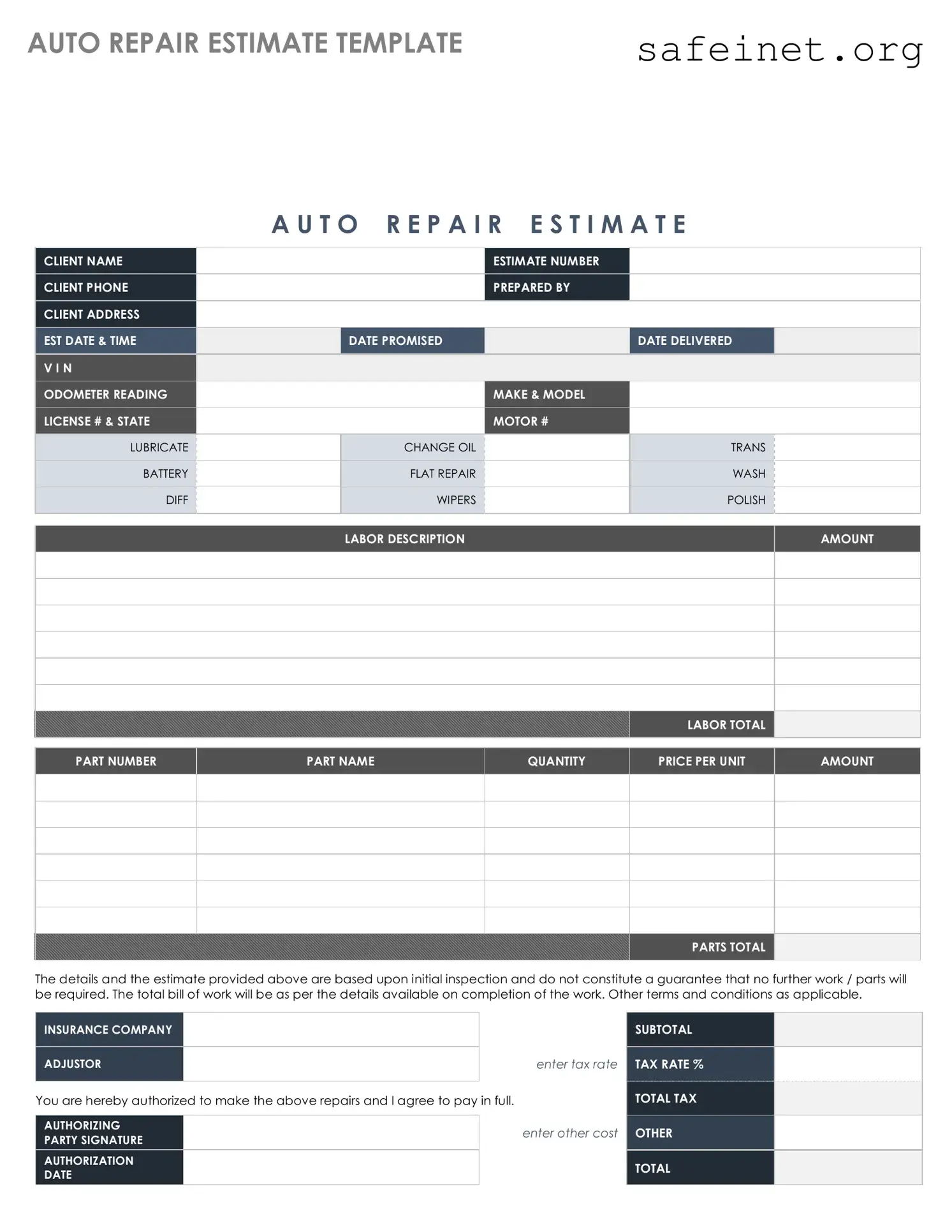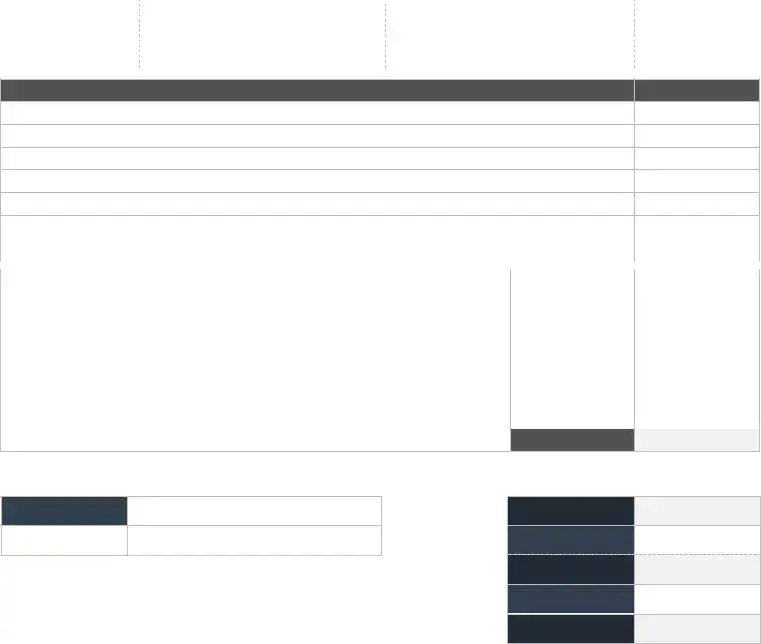What is an Auto Repair Estimate form?
The Auto Repair Estimate form is a document that helps you understand the estimated costs of repairing your vehicle. It outlines the services needed, parts to be replaced, and the expected labor fees. You receive this estimate before any work is done, allowing you to make informed decisions about your repairs.
Why do I need an estimate before repairs?
An estimate protects you, providing clarity on the expected costs associated with your vehicle's repair. It prevents unexpected expenses and enables you to budget appropriately. Additionally, having a written estimate adds transparency to the repair process.
How is the estimate calculated?
The estimate is based on several factors, including the type of repairs needed, the cost of parts, and the labor rates charged by the repair shop. Technicians assess your vehicle, diagnose the issues, and provide a breakdown of the expected charges.
Can I approve or decline the estimate?
Yes, you have the right to approve or decline the estimate. Once you receive the estimate, take the time to review it. If you have questions or concerns, discuss them with the service advisor. If you’re not comfortable with the costs, you can decline the work.
Is an estimate the final price I will pay?
Not necessarily. While an estimate offers a close approximation of costs, the final price may vary. Additional issues may arise during repairs, or parts may need to be replaced that were not initially identified. A good repair shop will communicate any changes to the estimate before proceeding with the work.
How long is the estimate valid?
The validity of an estimate typically depends on the shop’s policy, but estimates generally remain valid for a specific period, often around 30 days. It's important to confirm with the shop how long they will honor the estimate you received.
Can I get a second opinion on the estimate?
Absolutely! If you’re unsure about the proposed repair costs, seeking a second opinion is a wise decision. Different shops may provide different estimates, which can help you compare costs and understand the repairs needed.
What should I do if I find a lower estimate elsewhere?
If you receive a lower estimate from another shop, bring it to the attention of your preferred repair shop. They may be willing to match the price or explain why their estimate is different. Open communication is key in these situations.
Can I request a detailed breakdown of the estimate?
Yes, it’s your right to request a detailed breakdown of the estimate. A reputable shop will provide you with a list of services, parts, and labor, along with their associated costs. This transparency allows you to understand precisely what you're paying for.
What happens if I approve the estimate?
Upon approving the estimate, the repair shop will proceed with the necessary repairs outlined in the document. Make sure to keep a copy for your records. This will detail what was agreed upon and help in any future discussions regarding your vehicle's performance or issues.

